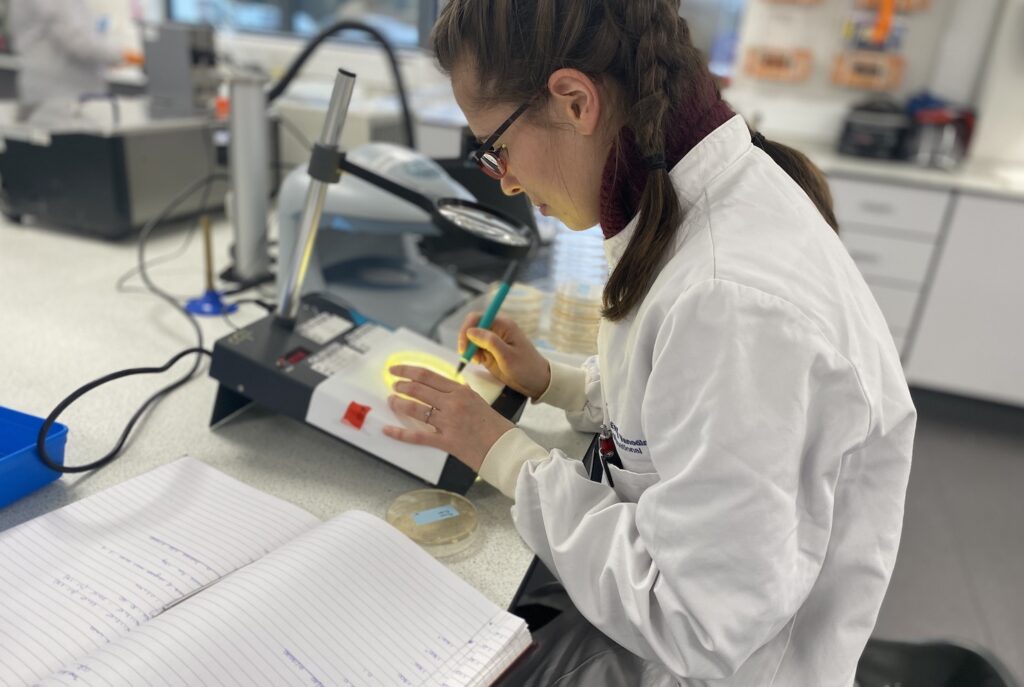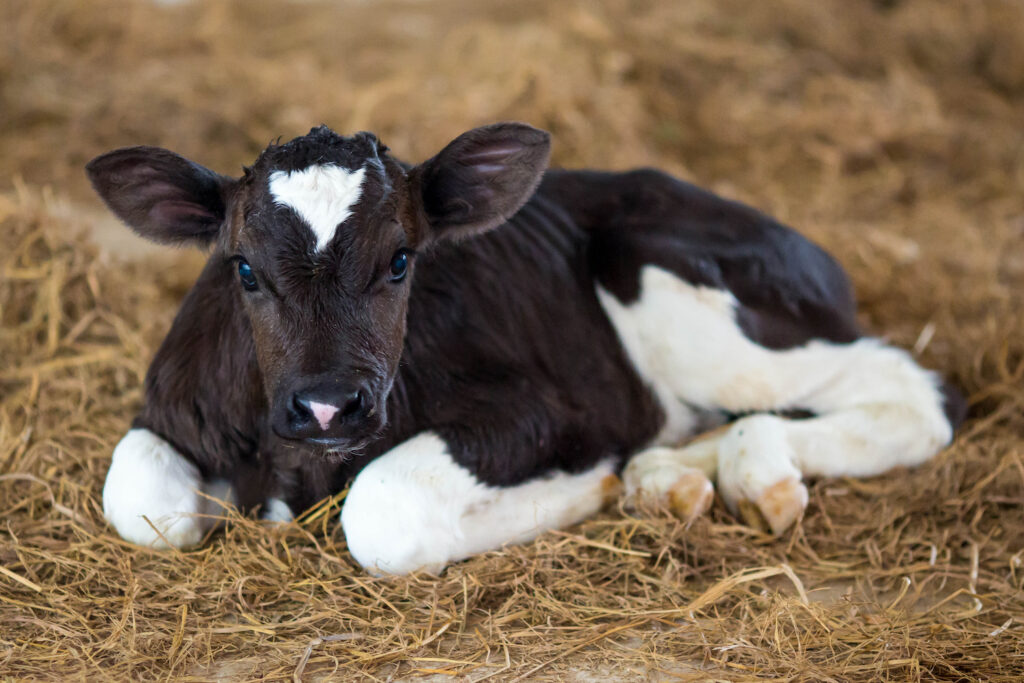Cleaning and disinfection for modern calf housing management
28th October 2021
Having an effective cleaning and disinfection programme is essential in modern calf house management. Evans Vanodine provides a handy six-step cleaning and disinfection programme to ensure good hygiene and reduce infection in your calves.
As a thoroughly cleaned and disinfected pen aids the health of calves, it is important that housing management systems are optimised in order to prevent stress and limit the calf’s susceptibility to disease.
Attention to detail and an effective cleaning and disinfection programme are essential in order to maintain high standards and reduce mortality rates, however, inevitably calves will be exposed to viruses, bacteria and parasites in their environment, which are capable of causing scours, respiratory problems or other diseases.
Through the use of a controlled disinfection programme, the number of infections and organisms to which the calf is exposed are reduced. The health of calves should be a priority, as how they are looked after in early life determines their outcome, which can essentially save both time and money.
Evans Vanodine recommends the following six-stage cleaning and disinfection programme using its range of products to ensure good hygiene and reduce infection:
Stage 1 – Remove all calves and equipment
1. Ensure all calves and equipment have been removed before cleaning commences.
2. Removable equipment should be taken outside and soaked in a trough containing a solution of Shift detergent at 1:250 (1 litre per 250 litres of water) to remove soiling. A brush and jet wash may need to be used to remove stubborn dirt.
3. After soiling has been removed equipment should be disinfected using GPC8 at 1:100.
4. Equipment should then be dried and stored in a clean area before being returned to the cleaned and disinfected calf pen.
Stage 2 – Remove all bedding
1. The bulk of bedding should be removed mechanically.
2. Soiled bedding should be taken to an area away from the calf housing.
3. Once the pen is free of the bulk of the soiled bedding, stubborn organic matter can be removed by scraping and brushing – you may need to jet wash to remove particularly stubborn matter.
4. This will make the wash-down more effective.
Stage 3 – Wash-down
1. To wash-down the pen, make up a solution of Shift at 1:150, or for heavy soiling, Target Powergel at 1:50.
2. Apply to all surfaces in the pen using a foaming lance; work from top to bottom and back to front, making sure all gates are also covered and leave for 30 minutes to ensure penetration into any remaining organic matter.
3. Rinse off using a low-pressure washer, paying particular attention to corners and cracks.
4. Leave to air dry completely before the next stage.
Stage 4 – Disinfection
1. Make up a solution of GPC8 disinfectant (at 1:50 if there is a known disease problem or 1:200 if no known problem).
2. The use of warm/hot water increases the effectiveness of the GPC8 disinfectant.
3. Apply the solution of disinfectant through a sprayer to all surfaces and gates working from top to bottom and back to front, ensuring extra coverage on corners and cracks.
4. Do not rinse off. Allow drying overnight.
Stage 5 – Restocking after disinfection
Once the freshly cleaned and disinfected pens are completely dry, apply lime powder, place fresh bedding into the pen and replace any disinfected equipment that was removed for the deep-clean.
Calving season:
1. Individual and group calf pens should be kept as clean as possible.
2. Bedding should be replaced on a regular basis to keep organic matter to a minimum and the bedding warm and dry for the calves.
Birthing pens:
Pens should be completely cleaned and disinfected after each birth to maintain a high level of hygiene.
Stage 6: Foot baths
1. Foot baths filled with FAM 30 at 1:100 (for a 12-litre bath add 120ml of FAM 30) should be placed at all entrances to the calf pen area immediately after filling.
2. Foot baths must be kept clean by changing the disinfectant regularly to prevent it from becoming a potential source of contamination.
3. Always dip feet before entering; if boots are soiled, clean with water and a brush before using the footbath.
4. Replace the solution every three days (72 hours) or sooner if the colour begins to fade.
Disinfection of paths, roadways and areas around calf housing:
1. Keep paths and surrounding areas as clean as possible.
2. Make up a solution of FAM 30 disinfectant at 1:100. Spray or brush down these areas regularly at a rate of 300ml of solution per square metre.
Coccidiosis and cryptosporidium reduction
Coccidiosis and cryptosporidium, both diarrhoea-causing infections that are common in young calves and can be fatal, are hard to treat; however, prevention through good cleaning and disinfection is key to reduction. Evans Vanodine has tested and found the following system to be effective in destroying the oocysts which enable the infections to spread.
The company recommends the following cleaning and disinfection programme to help to reduce cases:
- After all animals and portable equipment have been removed from the pen, remove any organic material.
- Apply Target Powergel at 1:14 through a foam cleaner or low-pressure washer (less than 70 bar). Allow a one-hour contact time before rinsing off thoroughly with clean water and allow to air dry.
- Spray all areas thoroughly with a solution of GPC8 at 1:35, at a rate of 300ml per square metre. For best results apply as a foam.
- Refit portable equipment and allow to air dry.
Protective clothing and equipment (PPE) must be available for all personnel. It is essential that the correct clothing and equipment is utilised when using chemicals to clean and/or disinfect.

Evans Vanodine produces an extensive range of cleaning and disinfection products for multiple applications within the dairy and wider animal health sectors.
Consistent, efficient, and cost-effective products
Evans Vanodine is an independent British family business that has been sharing its expertise since 1919, and operating within the agricultural industry since 1962. The business believes in manufacturing consistent, efficient, and cost-effective products whilst maintaining optimum quality across all divisions.
Evans Vanodine is a BSI registered company which operates to ISO 9001 for quality compliance and ISO 14001 for environmental compliance. The company produces an extensive range of cleaning and disinfection products for multiple applications within the dairy and wider animal health sectors.
On-site in Preston, the company houses three laboratories, which ensure the products farmers receive are of the highest quality, comply with industry regulations and meet any claims made. The extensive product range is complimented by the hands-on approach offered, from technical support and farm visits, comprehensive literature, support materials and micro profiles, to Evans’ in-house testing facilities. This provides farmers with the tools and expertise to implement a successful and effective hygiene programme.
To find the full range of Evans Vanodine products visit: www.evansvanodine.co.uk
To find your local Evans Vanodine distributor, contact sales@evansvanodine.co.uk

